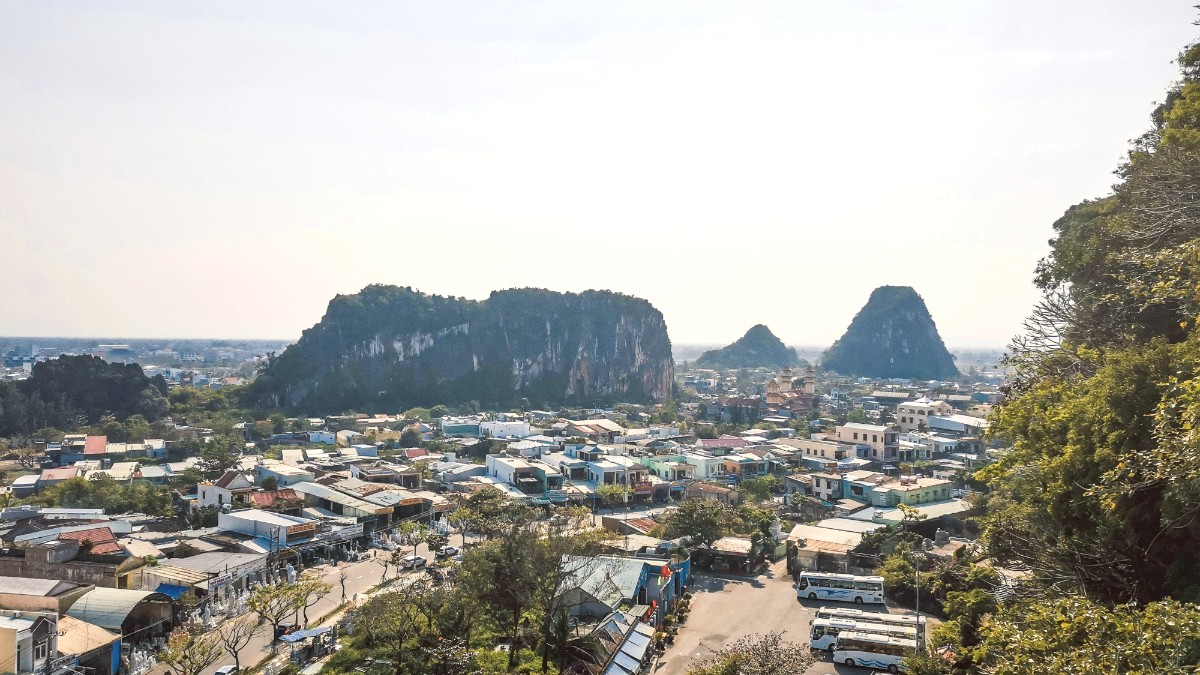
Central Vietnam, Vietnam
This guide outlines how to discover this captivating destination, making the most of every moment.
Da Nang occupies a prominent position on Vietnam's South Central Coast. Situated approximately 770 kilometers south of Hanoi and 960 kilometers north of Ho Chi Minh City, it functions as a central hub in the country. The city stretches along the mouth of the Han River, where it meets the East Sea, giving Da Nang its expansive coastline and natural harbor.
To the north, the Hai Van Pass, a stunning mountain road, separates Da Nang from Hue, with dramatic coastal views. The Truong Son Mountains flank the city to the west, providing a lush, green backdrop. This unique geography provides Da Nang with diverse landscapes, from sandy beaches to rugged mountains and a bustling riverfront. Its location makes it a prime starting point for journeys along the Central Heritage Road, connecting the UNESCO World Heritage Sites of Hue Imperial City, the ancient town of Hoi An, and the mystical My Son Sanctuary. Travel here involves standing at a crossroads of natural wonder and cultural richness.
Da Nang carries a history spanning centuries, weaving through ancient kingdoms, colonial influences, and modern conflict. Before European powers arrived, the area was a significant settlement of the Champa Kingdom. The Marble Mountains, five hills near the city, were a revered spiritual site for the Cham people, dotted with caves and pagodas. This legacy is preserved in the Cham Museum, which houses the world's largest collection of Cham sculpture.
During the French colonial era, Da Nang, then Tourane, grew into a major port city. Its strategic coastal location made it a valuable asset for trade and military operations. This period left behind architectural remnants, though much of the city has modernized. It became home to a large American air base and naval facility, functioning as a significant logistical and military hub for US forces. The scars of this conflict have largely faded, replaced by rapid development and a focus on peace and tourism.
Spiritual site at Marble Mountains
Major port city (Tourane)
Major US military base
Rapid economic and tourism growth
Resilience and forward-looking vision
Today, Da Nang is a testament to resilience and growth. The city respects its past while embracing a forward-looking vision, offering visitors a chance to see a Vietnam rebuilt and redefined.
The Cham Museum actively maintains the world's largest collection of Cham sculpture, a nod to the region's ancient history.
Rapid development and a focus on peace and tourism characterize the city today, highlighting its transformation.
Da Nang offers visitors a chance to see a Vietnam that has rebuilt and redefined itself.
Da Nang, a growing metropolis, presents a clear picture of modern Vietnam. It blends urban convenience with natural beauty.
This combination of geography, history, and modern development makes Da Nang a compelling destination. It provides both a relaxing beach escape and an active urban exploration.
South Central Coast of Vietnam, facing the East Sea.
Approximately 1.25 million people (2023 estimate).
About 1,285 square kilometers.
Da Nang boasts a long coastline with well-known beaches like My Khe Beach and Non Nuoc Beach. The Han River flows through the city, adding to its urban landscape. The Marble Mountains, a group of limestone hills, provide a natural and spiritual attraction. The Son Tra Peninsula, also known as Monkey Mountain, offers lush landscapes and panoramic views.
This city provides both a relaxing beach escape and an active urban exploration.